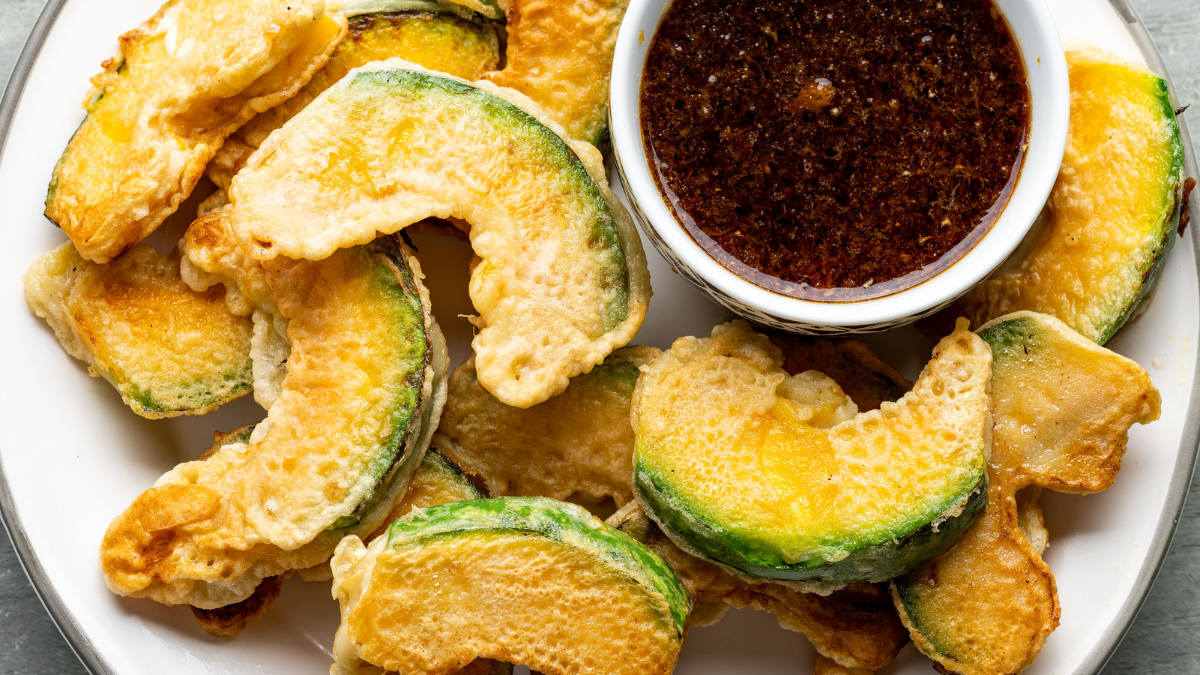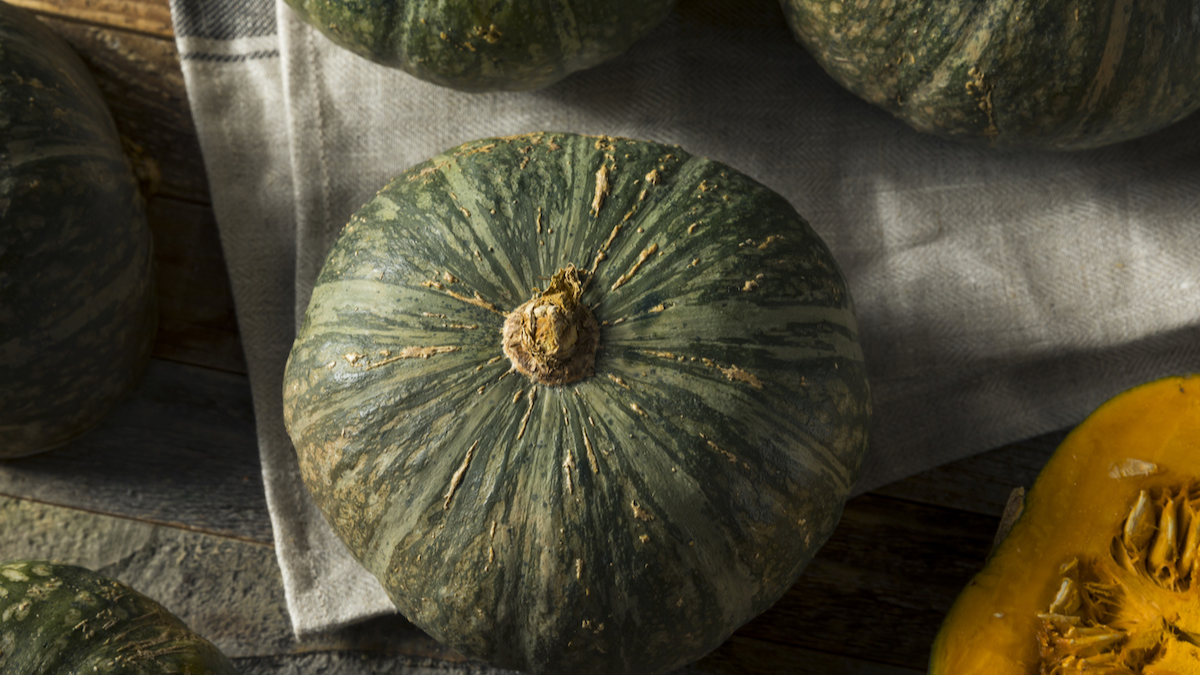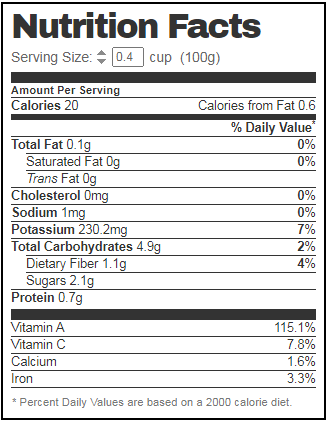A classic dish in any Japanese restaurant almost includes kabocha squash. This vivid fruit is frequently offered battered and fried in tempura-style vegetable dishes. Its hue, velvety texture, and buttery taste make it easy to mistake for sweet potatoes. Kabocha squash is a small to medium-sized winter squash typically prepared by roasting, and it has a firm, dark green exterior and a sweet flavor. It can be used in various savory and sweet foods, including muffins, quick bread, pies, cookies, soups, stews, and curries.
More than 8,000 years have passed since squash cultivation and consumption began. Squash was once a wild meal that Native Americans devoured, and it was tamed by European settlers and is now produced throughout North and South America. New types of squash were cultivated as it spread across the globe. In South America, kabocha was initially developed. The sweet squash was introduced to Japan by Portuguese sailors in the sixteenth century when it quickly gained popularity in cooking.
Kabocha Squash Nutrition Facts
What is Kabocha Squash?
Kabocha squash, also referred to as Japanese pumpkin, weighs 3 to 4 pounds and has a diameter of about 9 to 12 inches. It belongs to the Cucurbita maxima genu, Hubbardd, Banana, and Buttercup squash. It is widely farmed and consumed in Japan, where it can be found baked, grilled, in cakes, soups, jams, pies, and as a tempura ingredient.
The Kabocha squash is distinguished by its brilliant orange flesh, firm structure, and dark green skin with white spots or streaks. The flavor is exceptional and ranks among the sweetest pumpkins and squash. Some people liken the texture to that of a sweet potato. The fruit has a smooth, round shape with few ridges, fibrous flesh, and flat, cream-colored seeds that can be roasted and used as a garnish or as a snack. The flavor is increased by roasting and has overtones of chestnuts.
Kabocha squash is widespread throughout Asia, especially in Thailand, where it is frequently used in custards, other desserts, curries, and the preparation of sweet rice porridge in Korea. In addition to being used to make tempura, kabocha is commonly used in Japanese cooking to make shabu-shabu, hotpot dishes, and croquettes.
Taste of Kabocha
The flavor of kabocha is a combination between sweet potato and pumpkin. Its flesh is bursting with beta-carotene, fiber, and vitamins A and C and has a sweet, earthy flavor with overtones of chestnut. Unlike other winter squash varieties, such as butternut and acorn squash, whose thick skin is unsuitable for eating, kabocha’s peel is slightly thinner and suitable for consumption.
Culinary Uses of Kabocha Squash
Kabocha’s migration from South America to Asia has made it a favorite ingredient in different countries. It is prepared differently depending on where you go.
- Japan. In Japan, kabocha is often fried up with other veggies in tempura. Another popular way to prepare kabocha in Japanese cuisine is to flavor it with miso (soybean paste) before or during cooking.
- Thailand. In Thai cuisine, kabocha is often used in curries as a purée to help thicken the base or cut it up into pieces. It is also a popular dessert ingredient, especially in custards.
- Korea. Habakkuk is a famous Korean squash soup. This pumpkin porridge uses boiled kabocha squash, puréed, and mixed with rice.
How to Cook with Kabocha Squash?
Use a sharp knife to cut the entire kabocha squash in half to break it down. Be cautious since these suckers can be challenging to cut, similar to butternut or acorn squash. Slice the fruit into wedges after scooping out the flesh and seeds, which you should roast like pumpkin seeds. Kabocha squash can be eaten whole without problems, but you can also use a knife to remove the skin.
Kabocha squash adapts nicely to a wide range of cooking techniques and has limitless savory and sweet applications. Try substituting it in dishes that call for acorn, butternut, or pumpkin squash. We’ve compiled the top techniques for cooking with kabocha squash to get you going.
- Roast It: Toss kabocha squash with olive oil, salt, pepper, and spices, and let the oven make magic, such as in our Roasted Kabocha and Kale Salad. Kabocha halves also make perfect vessels for roasting flavorful fillings, as shown in Quinoa Stuffed Squash.
- Simmer It: When simmered in a fragrant broth, curry, or stew, kabocha takes on a new depth of flavor. See for yourself in Winter Squash and Tofu Panang Curry.
- Puree It: Kabocha Squash Puree acts as a speedy side to roasted chicken or pork tenderloin. Or, throw cooked cubes into a food processor to add body to Coconut-Red Curry Squash Soup.
- Bake It: Kabocha and cheese is a match made in heaven, as proven in our indulgent take on the classic gratin, Pumpkin Poblano Casserole.
- Grate It: Shred raw kabocha with a box grater to add flavor and texture to cakes, muffins, loaves of bread, and desserts. If you love the grated carrots in carrot cake, then our Chocolate-Swirled Pumpkin Bundt is a must-try.
What are the Best Kabocha Squash Recipes?
Here are some of the best kabocha squash recipes:
Tempura Kabocha
In Japan, this is kabocha’s most well-known dish. Kabocha can be cut into any desired form, such as circles or half-moon slices, with or without the skin. Beat an egg and add ice-cold water to make the tempura batter. Add flour and combine. In a pan, heat vegetable oil until it is hot and beginning to crackle. Four kabocha slices at a time should be dipped in the batter and placed in the pan.
To cook both sides, flip the squash pieces. Nearly two minutes should be spent cooking until the food is brown and crispy. Serve with tempura dipping sauce, a straightforward concoction of soy sauce, water, and Japanese sweet wine (mirin).
Sweet Roasted Kabocha
Set your oven to 400 degrees. You will need a sharp knife to cut through the kabocha, even though the skin is more straightforward to handle than other winter squash. Remove the seeds and stringy pulp by cutting it in half and slicing it afterward.
Add sea salt, maple syrup, and olive oil to the coating. Brown sugar can be used in place of the syrup for a texture that is more caramelized. On a baking sheet, arrange the slices side by side. Roast the squash in the oven for 30 minutes or until golden brown.
Stuffed Kabocha
A kabocha’s hollowed interior can be used as food. Roast a whole kabocha by cutting off the top and scooping out the seeds, or chop the squash in half and cover with extra virgin olive oil and salt to form two bowls. Rast for 30 to 40 minutes until a fork can easily glide into the skin.
Choose your kabocha bowl’s filling. Make a festive filling with black beans, rice, corn, avocado, tomato, and cilantro that pays homage to the squash’s Latin American origins. The filling should also be spiced with chili powder and paprika. Place the filling inside the kabocha, then sprinkle cheese on top.
Kabocha Curry
Curry is a traditional meal in Asia. In a pan, warm up vegetable or coconut oil. When the onion is soft and translucent, add the chopped onion (about five minutes). The onion should be covered in cumin, and curry paste should then be added. Coconut milk is whisked in. Add the kabocha squash, bell pepper, tofu, and any other preferred vegetables as it starts to simmer, cooking until the kabocha is soft.
Kabocha Squash Soup with Apple
Kabocha is a type of winter squash that produces substantial, thick soups. An onion that has been chopped is sauteed in hot olive oil. Chop up and add granny smith and tart apples that have been peeled. For a spicy finish, add ginger. Add the veggie broth and salt and pepper to taste. To make the soup more decadent, add cream. Simmer the squash until it’s tender. The soup will be thick and smooth once the squash and apple have been puréed using an immersion blender.
Kabocha Squash Benefits
Kabocha squash has many health benefits mentioned below:
- Carotenoids, a precursor to Vitamin A essential for immune system health, eye health, and bone growth, are abundant in squash.
- Kabocha’s high fiber content and complex polysaccharides promote long-lasting fullness, which aids with appetite management and blood sugar regulation. Additionally, studies show that soluble fiber, which absorbs water and pushes waste through your intestinal tract, is crucial in lowering the risk of colon cancer.
- Kabocha’s high Vitamin C content promotes tissue regeneration and repair, which helps to strengthen the immune system. The production of collagen, a crucial component in many bodily systems, and the promotion of iron absorption are both facilitated by vitamin C.
- Kabocha is rich in potassium, which can help counteract sodium’s adverse effects on blood pressure.
- These substances combat free radicals, which play a role in disease, accelerated aging, and cardiac disease.
- Dried and roasted kabocha seeds are a good source of plant protein, plant-based omega-three fatty acids, zinc, and magnesium.
Where to Buy Kabocha Squash?
During the fall, winter, and early spring, kabocha squash can be purchased whole at farmers’ markets, and supermarket produce sections. Squash with an entire stem devoid of dings, dents, or peaceful places should feel hefty for its size.
Whole kabocha squash can last up to five months when kept in an excellent, dark spot out of the sun. A whole kabocha squash should be stored at a temperature of about 50 degrees Fahrenheit and 60 percent relative humidity. Once sliced, it can be stored in the refrigerator for 3 to 4 days.
Conclusion
The kabocha squash resembles a small green pumpkin with flesh that is orange and thick green skin. Although sweeter, the flavor is comparable to other winter squash, such as butternut squash, and its taste is similar to that of a sweet potato.
However, kabocha doesn’t raise blood sugar levels because it has a lower glycemic load than pumpkin and sweet potatoes. Additionally, it’s a fantastic source of beta carotene, a vitamin A precursor. When buying, aim for squash with thick, rigid skins that feel hefty for their size, don’t show any signs of mold, and don’t have any soft spots.
Store uncut entire squash in a cool, dry area. It can be stored for up to three months. Kabocha squash can be stored in the refrigerator for up to four days after being chopped and cooked. Additionally, cooked squash can be stored in the freezer for up to a year.



